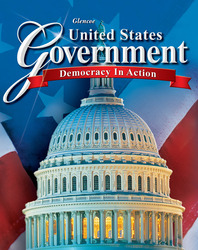United States Government: Democracy in ActionChapter 18:
Interest Groups and Public OpinionChapter Overviews[logo] Essential Question
How does public opinion influence government, and what do interest groups do to ensure that their policy positions have the most impact? Section 1 Interest Group Organization
Americans organize in interest groups to pressure all levels of government. These groups spend much time and money in organized efforts to influence officeholders to support laws that the groups feel will be beneficial. Interest groups are usually organized around only a few issues or specific problems, and they draw financial resources and expertise from their many members. People join interest groups to protect and promote their cause. Interest groups take many forms. They may be business related, labor related, or agriculturally related. Others may form to promote their professions, the environment, or the public interest. All foreign agents of interest groups must register with the U.S. government. Section 2 Affecting Public Policy
Most interest groups try to influence government policy by lobbying, or making direct contact with, lawmakers or other government leaders. Lobbyists provide Congress with facts and data about the policy they want implemented. They also provide information in congressional testimony and might help draft bills. Interest groups also employ television, the Internet, radio, magazine, and newspaper advertising to create public support for their causes. They also may resort to court action or seek a constitutional amendment to achieve their goals. Interest groups set up political action committees (PACs) to collect money and provide financial support for a political candidate. They use their money to directly influence election outcomes. A PAC must register with the government six months before an election, have at least 50 contributors, and give to at least five candidates in a federal election. PACs must follow strict accounting rules. The Federal Election Commission issues regulations and advisory opinions that control PAC activities. Affiliated PACs are tied to corporations, labor unions, trade groups, or health organizations. Independent, or nonconnected, PACs are not connected to an existing interest group. So-called 527 organizations focus on advocating an issue rather than a candidate and thus avoid regulation. Section 3 Shaping Public Opinion
Three factors characterize the nature of public opinion—it is diverse, it must be expressed and communicated to government, and enough people must hold a particular opinion to make government officials listen to them. In a process called political socialization, individuals learn their political beliefs and attitudes from their family, school, friends, coworkers, and the mass media. Government leaders, especially the president, also have a tremendous influence on people's opinions. Political efficacy and citizen participation are vital in a democracy. The political culture sets the general boundaries within which citizens develop and express their opinions. The political culture also colors how Americans see the world. One's political ideology—liberal versus conservative, for example—provides the framework for looking at government and public policy. Section 4 Measuring Public Opinion
Between elections, officials want to know what the public is thinking. Over the years, the methods and technology to access and tabulate public opinion have changed. Interest groups provide elected officials with opinions, but they represent attitudes of a vocal minority. Newspapers, magazines, television, and radio reflect the interests of the public, but they often give a distorted view of public opinion. Many people write letters or e-mails to let the president and lawmakers know their views. Unscientific straw polls help officials gauge public opinion from respondents who voluntarily answer the questions. And many officials keep track of opinions about current issues expressed on political Web sites and blogs. Scientific polling helps people in politics measure public opinion. Scientific polling involves three steps: selecting a representative sample of the group to be questioned, presenting a carefully nonbiased wording of questions to the sample, and interpreting the results.  | 
















